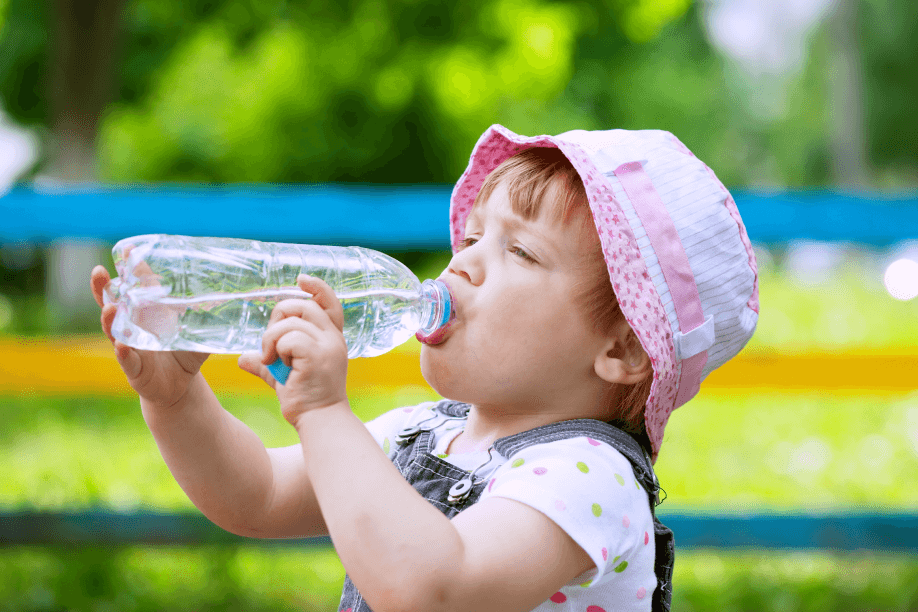Children who have a body mass index (BMI) at the same level or higher than 95 percent of their peers are considered to be obese. BMI is a tool used to determine your “weight status.”
BMI is calculated using your height and weight. Your BMI percentile is then determined using your gender and age
Childhood obesity is particularly troubling because the extra pounds often take children on the path to health problems that were once considered adult problems — diabetes, high blood pressure and high cholesterol.
Many obese children become obese adults, especially if one or both parents are obese. Childhood obesity can also lead to poor self-esteem and depression.
Many factors — usually working in combination — increase your child’s risk of becoming overweight:
1. Diet
Regularly eating high-calorie foods, such as fast foods, baked goods and vending machine snacks, can easily cause your child to gain weight.
Candy and desserts also can cause weight gain, and more and more evidence points to sugary drinks, including fruit juices, as culprits in obesity in some people.
2. Lack of Outdoor Activities

Children who do not indulge in outdoor activities like playing outdoor games are much more likely to gain weight because they don’t burn as many calories.
Too much time spent in sedentary activities, such as watching television or playing video games, also contributes to the problem.
3. Family factors
If your child comes from a family of overweight people, he or she may be more likely to put on weight.
This is especially true in an environment where high-calorie foods are always available and physical activity isn’t encouraged.
4. Psychological factors
Personal, parental and family stress can increase a child’s risk of obesity.
Some children overeat to cope with problems or to deal with emotions, such as stress, or to fight boredom. Their parents may have similar tendencies.
5. Socioeconomic factors
People in some communities have limited resources and limited access to supermarkets.
As a result, they may opt for convenience foods that don’t spoil quickly, such as frozen meals, crackers and cookies.
In addition, people who live in lower income neighborhoods might not have access to a safe place to exercise.
Health Risks Associated with Childhood Obesity
Children who are obese have a higher risk of developing health problems than their peers who maintain a healthy weight. Diabetes, heart disease, and asthma are among the most serious risks.
1. Diabetes
Children and adults who are overweight are more likely to develop type 2 diabetes. However, the condition may be reversible through diet and lifestyle changes.
2. Heart Disease
High cholesterol and high blood pressure raise the risk of future heart disease in obese children.
Foods that are high in fat and salt may cause cholesterol and blood pressure levels to rise. Heart attack and stroke are two potential complications of heart disease.
3. Asthma
According to a recent study published in the journal Asthma Research and Practice, about 38% of adults with asthma in the United States are also obese.
That same study found that obesity may be a risk factor for more severe asthma in some, but not all, people with obesity.
4. Sleep Disorders
Kids and teens who are obese may also suffer from sleep disorders, such as excessive snoring and sleep apnea. Extra weight in the neck area can block their airways.
5. Joint Pain
Your child may also experience joint stiffness, pain, and limited range of motion from carrying excess weight. In many cases, losing weight can eliminate joint problems
Seven tips to healthy weight-loss in children
1. Set realistic goals
Children need a nutrition-packed diet for their bodies and brains to develop, so you have to make sure they get at least 1,800 to 2,200 calories a day, depending on their gender (boys need more) and how active they are, irrespective of gender.
Many children lose excess weight as they grow taller between the ages of 10 and 15. If they don’t, and instead continue to pack on the kilos, target to have them lose between 1 kg and 2 kg a month.
Anything more could lead to suboptimal growth and development.
2. Get them moving
Walking, playing a sport burns far more calories than watching TV or playing video games.
Walking, cycling, swimming or playing an active sport like cricket, football, tennis or badminton for at least an hour a day are a must for any healthy child, but most children stop doing this when they hit their teens, often because of academic pressure.
Try not to let this happen, because this is also the time when your kids will develop the lifestyle habits that will stay with them, such as taking stairs instead of a lift or walking instead of driving.
3. Offer fresh foods

Encourage children to eat home-cooked food and, as far as possible, cut down on mid-meal snacking unless it’s fresh fruit, milk, unsweetened yoghurt (curd) or sprouts.
Eat whole foods — fruits, vegetables, nuts, legumes and whole grains — often, as they are low in calories and loaded in protein, fibre, minerals and vitamins.
4. Avoid packaged snacks
Even low-fat ‘baked not fried’ snacks contain unhealthy fats and are low in fat, salt and sugar only relatively to the original calorie-dense products.
Low-fat chips, for example, have fewer calories than regular chips but it is still a lot of calories.
One serving of chips (10 pieces) has about 150 calories, ‘light’ and ‘reduced’ chips have 75 to 100. You would need to walk 2 km to burn 75 calories!
5. Make drinking water a habit

Thirst is often mistaken for hunger, so children may end up eating when they are just thirsty.
Instead of juices, colas and sweetened shakes, children must get into the habit of drinking water to stay hydrated.
Even juices with no added sugar are high in calories, from the natural sugars found in fruit.
An unsweetened glass of juice has at least double the calories one would get from the whole fruit, which also comes with dietary fibre that lower hunger pangs by making you feel full.
6. Don’t stop desserts
Children aiming to lose weight must cut back on junk food and sugary treats such as ice-cream, but they should not be completely deprived because that could lead to cravings.
Cut back on portion sizes and allow your child to have his or her favourite treat once a week or twice as a reward for sticking to a healthy meal plan.
7. Lead by example
Food habits form at home, so the whole family must adopt healthy eating habits and become more active to help children lose weight.
Children must learn to eat when they’re hungry and not just because there’s food around. Replace junk food at home with healthy snacks — nuts, seeds, trail mix and fruit — to prevent cravings.
Stop snacking and dining in front of a laptop or TV set, because mindless eating usually results in overeating.
Let Possible help you discover a healthy you. Talk to our Possible Nutritionist and walk the path of health and happiness with us. The first consultation is on us. Click here to avail.

Thank you for sharing.
Hi! Thank you and keep following our blog to know such more health information.